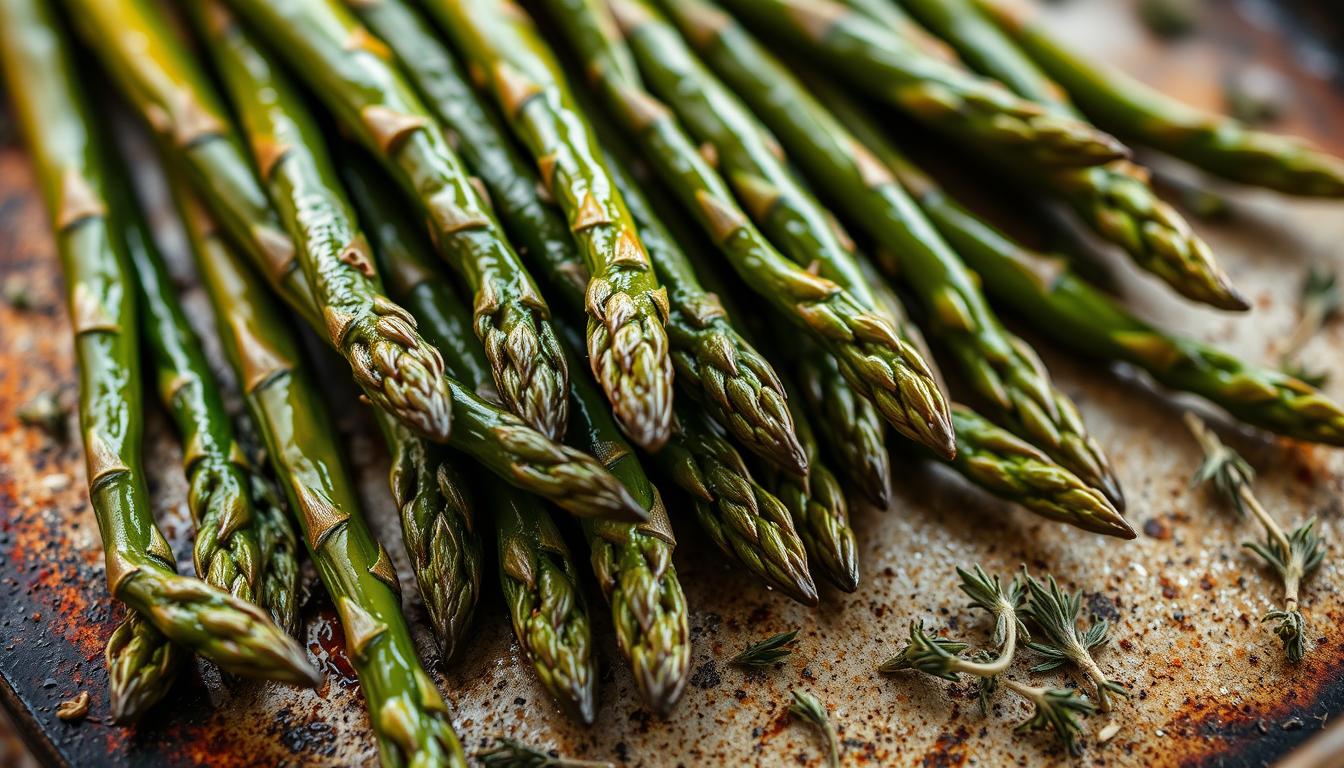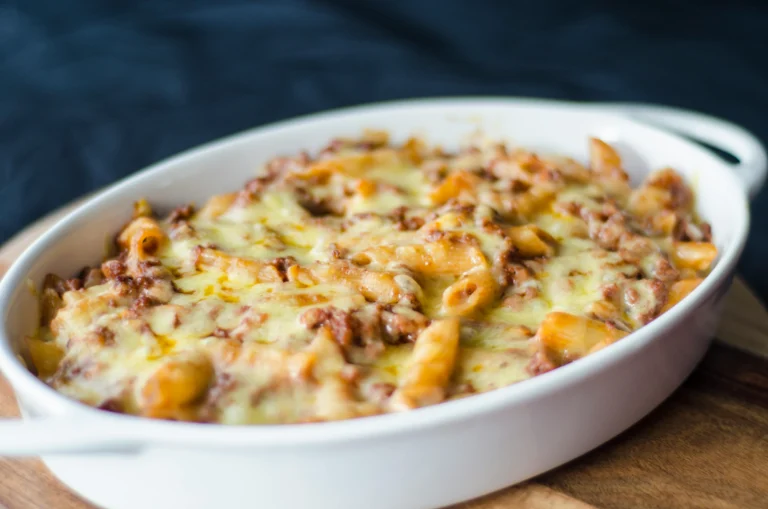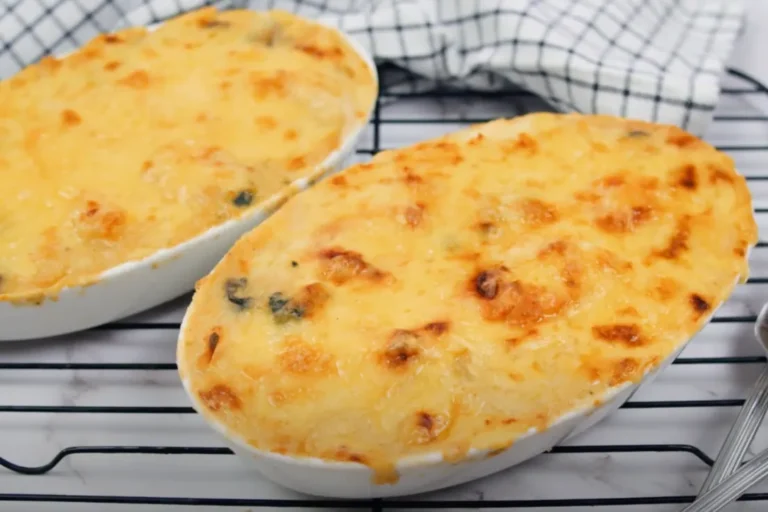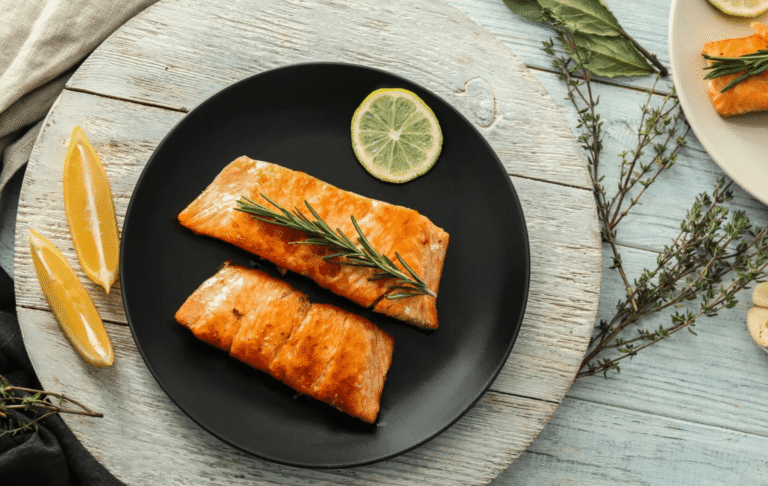Imagine transforming a simple side dish into a culinary masterpiece with just a few easy steps. Roasting asparagus in the oven brings out its natural sweetness and gives it a deliciously crispy texture. This method is not only quick, taking just a few minutes, but also incredibly easy, making it perfect for any meal.
By following a simple recipe, you can achieve perfectly cooked asparagus every time. The key lies in proper preparation and cooking techniques that enhance its flavor and texture. In this guide, we’ll walk you through the process, ensuring you can confidently prepare a delicious and elegant side dish that’s sure to impress.
Listen to our podcast about this article
Table of Contents
Why Roasted Asparagus Makes the Perfect Side Dish
When it comes to side dishes, few options are as impressive as a plate of perfectly roasted asparagus. This simple yet elegant vegetable dish is a beautiful addition to any dinner table, offering a delicious and refined accompaniment to a variety of main courses.
Benefits of Roasting vs. Other Cooking Methods
Roasting asparagus highlights its natural sweetness and deepens its overall flavor. Unlike steaming or sautéing, roasting gives the tips a crispy texture, creating a delightful contrast with the tender stalks. This method also helps retain the vibrant green color, making it visually appealing.
What Makes Roasted Asparagus Special
Roasted asparagus is not just a tasty side dish; it’s also incredibly versatile. The roasting process concentrates the asparagus flavor, making it appealing even to those who aren’t typically fond of vegetables. You can enjoy it hot or at room temperature, and it serves as an excellent base for various seasonings and toppings, making it a great addition to any meal or recipe.
Selecting the Best Asparagus for Roasting
Choosing the right asparagus is crucial for achieving the perfect roast. The quality of your asparagus can make a significant difference in the final result.
Thin vs. Thick Asparagus Spears
When it comes to asparagus, the thickness of the spears can affect the roasting outcome. Thicker spears tend to be more tender, while thinner spears cook more quickly. Your choice depends on personal preference and the desired texture.
How to Store Asparagus Before Cooking
To mention asparagus fresh, it’s essential to store it properly. The best way to keep asparagus fresh is to submerge the cut ends asparagus in a little water. Fill a glass jar with about 1 inch of water, place the cut end in the water, and cover it loosely with plastic wrap or a plastic bag. Refrigerate to keep fresh for several days. This method treats asparagus like fresh flowers, extending its freshness significantly.
Some key tips for storing asparagus include checking the water daily and replacing it if it becomes cloudy. If you plan to use the asparagus within 24 hours, simple refrigeration is sufficient.
Preparing Your Asparagus for Roasting
Before you roast asparagus, it’s crucial to prepare it properly to bring out its natural flavors. Proper preparation involves a few key steps that ensure your asparagus roasts evenly and tastes great.
Trimming the Woody Ends
The first step in preparing your asparagus is to trim the woody ends. These tough, fibrous ends are not pleasant to eat and can be quite woody. To trim them, you can either snap the asparagus spears at their natural breaking point or cut off about an inch from the bottom using a sharp knife.
Washing and Drying Tips
After trimming, it’s essential to wash your asparagus thoroughly. Fill a large bowl with cold water and swish the asparagus around, paying special attention to the tips where debris often collects. After washing, dry the asparagus using clean kitchen towels or paper towels to remove surface moisture. For maximum efficiency, lay the washed asparagus on a clean kitchen towel, cover with another towel, and gently roll to absorb moisture. Then, spread the asparagus out in a single layer on a rimmed baking sheet to prepare it for roasting.
- Thorough washing is essential to remove dirt and sand trapped in the tips.
- Thorough drying is essential to avoid steaming and ensure proper roasting.
Essential Ingredients for Perfect Roasted Asparagus
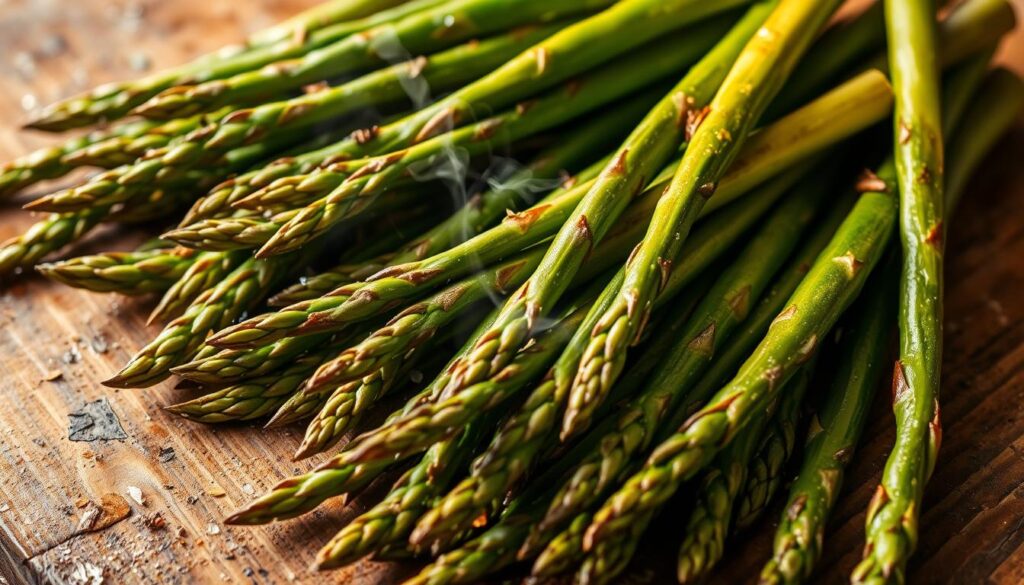
To achieve perfectly roasted asparagus, it’s crucial to start with the right ingredients. The quality of your roasted asparagus dish heavily relies on the components you choose.
Read more: How to Make Delicious Tilapia Tacos at HomeOlive Oil and Its Importance
Olive oil is a fundamental ingredient in roasting asparagus. It not only adds flavor but also helps in achieving a tender and caramelized exterior. Drizzling your asparagus with olive oil before roasting is essential for bringing out its natural sweetness.
Salt, Pepper, and Basic Seasonings
After drizzling with olive oil, sprinkle your asparagus generously with kosher salt and freshly ground black pepper. Kosher salt is preferred for its clean taste and ease of distribution, while freshly ground black pepper provides aromatic complexity. You can also enhance the flavor with additional seasonings like lemon juice or zest after roasting.
- Salt enhances the natural flavor of asparagus, with kosher salt being the preferred choice.
- Freshly ground black pepper adds depth to the dish, making it worth the extra effort.
- The timing of seasoning matters, with salt and pepper applied before roasting and acidic ingredients like lemon added afterward.
Step-by-Step Roasted Asparagus Recipe
Let’s dive into the step-by-step process of roasting asparagus to bring out its best flavor. Roasting asparagus is a simple process that can elevate any meal.
Preheating Your Oven to the Right Temperature
Preheat your oven to a high temperature, around 425°F (220°C). A hot oven is crucial for achieving that perfect roast.
Arranging Asparagus on the Baking Sheet
Arrange the asparagus spears in a single layer on a baking sheet. This ensures even cooking and prevents the spears from steaming instead of roasting.
Seasoning Techniques
Season the asparagus with olive oil, salt, and pepper. You can also add other seasonings of your choice to enhance the flavor.
Roasting Time and Visual Cues for Doneness
Roast the asparagus in the preheated oven for about 10-15 minutes, depending on the thickness of the spears. Thicker spears may require up to 20 minutes. Check for doneness by piercing with a fork; it should have some resistance but not be too hard. Visual cues include a vibrant green color and slight browning.
Flavor Variations and Seasoning Ideas
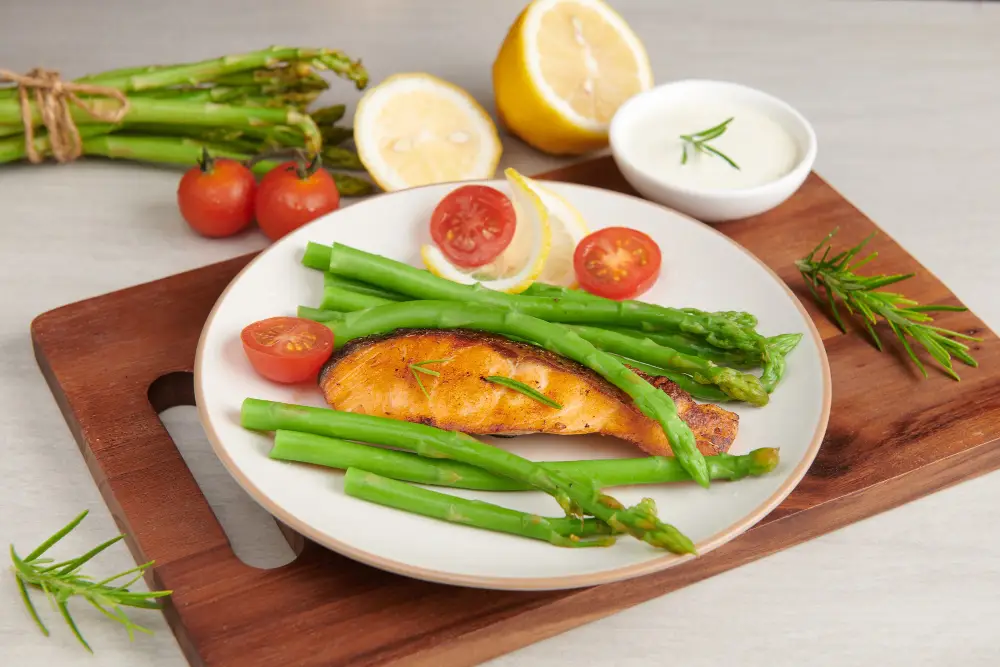
Transform your roasted asparagus into a culinary delight with these flavor combinations. You can easily elevate this simple side dish into a gourmet experience by incorporating a few key ingredients.
Lemon and Parmesan Combination
A squeeze of fresh lemon juice paired with grated Parmesan cheese adds a bright, tangy flavor to your asparagus. This classic combination is both simple and sophisticated.
Garlic and Herb Options
Mixing minced garlic with chopped fresh herbs like parsley or thyme creates a savory and aromatic flavor profile. This complements the natural sweetness of the asparagus.
Balsamic and Red Pepper Flakes
For a bolder flavor, try drizzling roasted asparagus with balsamic glaze and sprinkling with red pepper flakes. This adds a sweet and spicy kick.
Nut and Cheese Toppings
Toasted nuts like almonds or pine nuts, combined with crumbled cheese such as Parmesan or feta, add texture and depth. Toasting nuts before adding them enhances their flavor, making a significant difference in the overall dish.
- Nuts and cheese add textural contrast and protein.
- Toasting nuts enhances their flavor.
- Combining nuts with cheese like Parmesan creates a rich flavor profile.
Troubleshooting Common Roasted Asparagus Problems
Even with the best intentions, roasted asparagus can sometimes go awry, but knowing how to troubleshoot common issues can save your dish. Roasting asparagus to perfection requires attention to detail, but with a few simple adjustments, you can achieve tender, delicious results every time.
Preventing Soggy Asparagus
Soggy asparagus is often the result of overcrowding on the pan or incorrect oven temperature. To prevent this, ensure your asparagus spears are spread out in a single layer on the baking sheet, allowing for air to circulate around each spear. This simple step can make a significant difference in the final texture.
Fixing Undercooked or Overcooked Spears
If your asparagus is undercooked, you can easily remedy this by returning it to the oven for an additional 2-3 minutes until it reaches your desired level of tenderness. However, if it’s overcooked, there’s no way to restore its texture, though it can be repurposed in dishes like soups or purees where texture isn’t as crucial. Recognizing the signs of properly cooked asparagus—tender but still crisp—helps you avoid both undercooking and overcooking.
- Spread asparagus out in a single layer to prevent sogginess.
- Check for doneness by piercing with a fork; it should be tender but still crisp.
- For very thick asparagus, consider peeling the lower portion to ensure even cooking.
Conclusion: Enjoying Your Perfectly Roasted Asparagus
With the simple techniques outlined in this article, you’ll be well on your way to creating perfectly roasted asparagus every time. This delicious side dish is not only easy to prepare but also versatile, as it can be served immediately or reheated later. You can store leftover asparagus in an airtight container in the fridge for up to 4 days and reheat it in the microwave or oven.
Some ideas for using leftover roasted asparagus include adding it to pasta dishes, salads, or omelets for a quick and flavorful meal. The techniques you’ve learned can also be applied to roasting other vegetables, expanding your repertoire of simple and delicious recipes.


